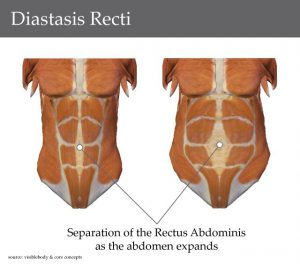3 Key Changes During Your Pregnancy
Studies have shown that more than two-thirds of pregnant women experience back pain and almost one-fifth experience pelvic pain²,³. As your pregnancy advances, your back experiences more strain from three key changes – a shift in your centre of gravity, hormonal changes and abdominal muscles changes.
Centre of Gravity Shift
During pregnancy, your centre of gravity shifts forward. The weight of the growing uterus accentuates the curvature of the spine and adds stress to the spinal joints, contributing to the tightening of your spinal muscles. The growing bump also adds extra load on joints which means more work for the back muscles. This why your back pain may worsen over time as they tire.
Hormonal Changes
Relaxin is a hormone produced during pregnancy, which acts on ligaments, making them more supple. The ligaments which hold the pelvis bones together gradually loosens to prepare you for labour and birth. Unfortunately, this compromises joint stability of the pelvis and might cause pain when you sit for long periods, stand, walk, roll over in bed, get out of a low chair, bend, and lift.
Abdominal Muscles Changes
As your uterus expands, the abdominal muscles stretches, which reduces support for the spine. Diastasis recti, a pregnancy-induced condition, is the separation of the rectus abdominis muscles in the middle, reducing the ability of the abdominal muscles to support the pelvis and spine¹.
In the next article, we will share some tips on what you can do to prevent back pain associated with pregnancy.

